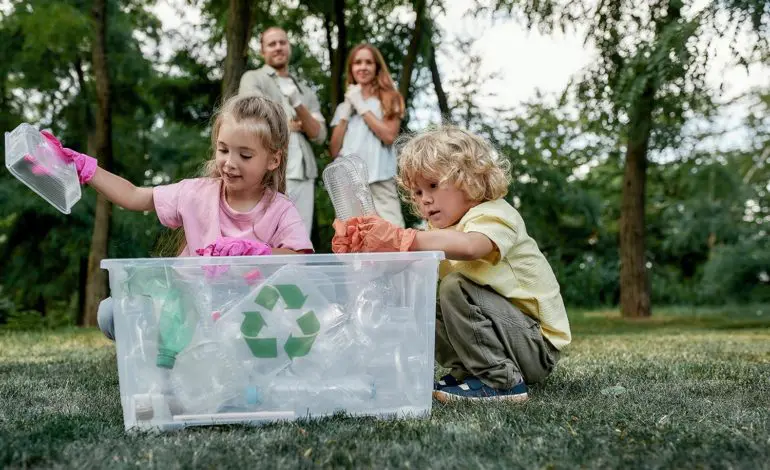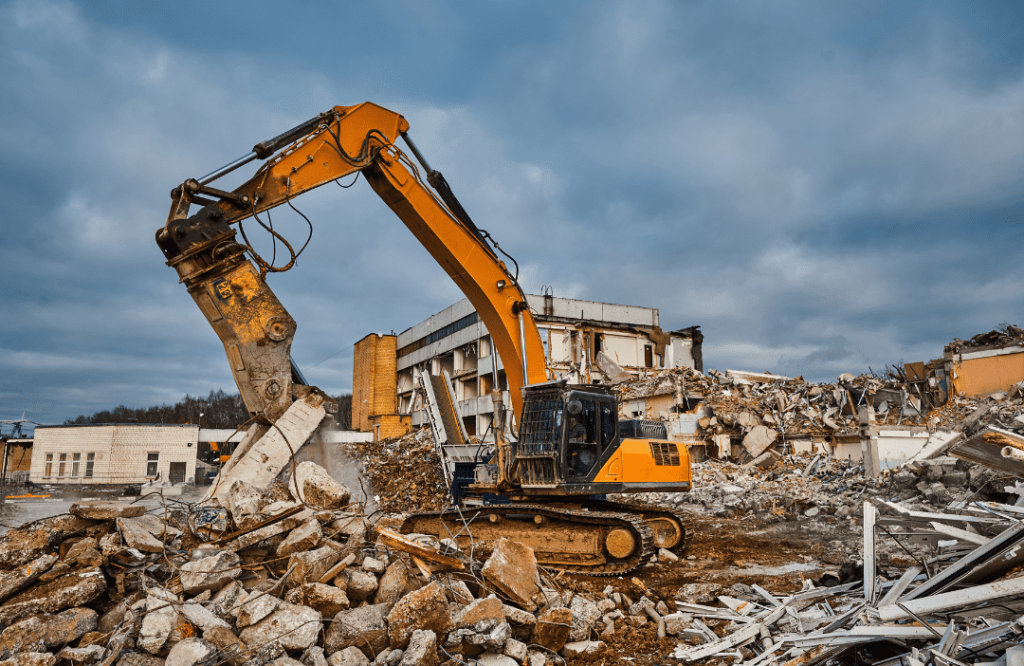
Understanding Construction and Demolition (C&D) Waste
What is C&D Waste?
Construction and demolition waste refers to the waste generated during the demolition, renovation, or demolition of buildings and structures. It includes materials such as concrete, wood, bricks, metals, plastics, insulation, asphalt, gypsum & glass.
Waste is a subject of growing concern globally. According to a World Bank report, in the year 2020, a total of 2.24 billion tones of municipal solid waste was generated. The report also estimates by 2100, waste generation in the world will peak at 11 million tones daily. Such predicted trajectories of waste growth are liable to have substantial implications for the environment as well as the health, well-being and prosperity of the human race.

Why Managing C&D Waste is Important?
Proper management of construction and demolition waste processing plant waste is crucial for several reasons:
- Environmental Benefits: Proper C&D waste management reduces the environmental impact of construction and demolition waste by minimizing the need for landfills, conserving natural resources, and preventing pollution. It contributes to sustainability by promoting Reducing, Reusing, and Recycling Concrete Materials
- Economic Benefits: Effective C&D waste management practices can create economic opportunities by generating revenue through the sale of recycled materials and energy recovery. It also reduces the cost of Disposal of C&D waste, landfill fees, and potential fines or penalties for non-compliance with waste regulations.
- Social Benefits: Proper waste management improves public health and safety by reducing the risk of accidents. It also enhances the overall livability of communities by minimizing air pollution and disturbance associated with waste disposal.

C&D Waste Management Strategies
Reduce
The first step in C&D waste management is to reduce waste generation by implementing strategies such as designing buildings for longevity and resource efficiency.
Reuse
After reducing waste and promoting reuse, recycling is the next priority. Recycling involves processing waste materials to create new products or raw materials for use in other industries.
Recover
If waste cannot be directly recycled, recovery techniques such as energy recovery or waste-to-energy processes can be employed to extract value from the waste.
Disposal
Disposal is the last resort and should only be considered for waste that cannot be managed through other means. Proper disposal involves careful selection of landfill sites and compliance with environmental regulations.
Benefits of Recycling C&D Waste Processing
Saves Energy
Recycling materials often requires less energy than producing new ones.
Cost efficient
Scientific C&D waste management prevents mixing of C&D Processing facility into MSW stream thus reduces processing cost and increases efficiency of MSW.
Prevention of Urban Flooding
C&D waste management prevents clogging of drains and water bodies therefore avert flooding in urban areas.
Reduces Landfill
Proper management and recycling of C&D waste leads to saving of precious land by reduction in volume going to landfill as it diverts waste from the over-loaded landfills.
Generation of Employment
C&D waste processing and recycling generates employment through new enterprisesfor every city.
Recyclables products
Use of C&D recycled products help in reducing the demand and requirement of virgin material and natural resources
REGULATIONS AND POLICIES
• Compliance requirements: To comply with regulations and policies, construction and demolition waste generators need to implement proper waste management practices. This includes obtaining necessary permits, ensuring proper sorting and segregation of waste, utilizing approved disposal facilities, maintaining appropriate documentation and adherence to C&D waste management rules 2016.
• Ministry of Urban Development vide circular dated June 28, 2012, directed States to set-up such facilities in all cities with a population of over 10 lakhs (one million plus cities) to establish environment friendly C & D recycling facilities. The MoUD report ‘Technical Aspects of Processing and Treatment of Municipal Solid Waste’, Swach Bharat Mission (MoUD, 2016) also recognizes the need for C & D waste management.
Resources and Support

Community Recycling Programs: Various numerous communities provide facilities and programs for creating awareness and promoting recycling of construction and demolition waste.

Government Regulations: It is essential to comply with waste management regulations at the local, state, and central levels.
Additional Guidelines and Policies
1. Central Public Works Department (CPWD) Guidelines
- CPWD has issued guidelines to promote the use of recycled C&D waste plant in government construction projects.
- These guidelines include specifications for the use of recycled aggregates in concrete and other construction activities.
2. Swachh Bharat Mission (Urban)
- The Swachh Bharat Mission (Urban) promotes sustainable waste management practices, including the management of C&D waste, to create clean and sustainable urban areas.
- It encourages cities to establish C&D waste recycling facilities and integrate them into the urban waste management system.
Benefits of Recycling C&D Waste Processing
Challenges
The management of C&D waste poses several challenges, including inadequate infrastructure and limited awareness. Addressing these challenges is crucial for effective waste management. Another challenge in C&D waste resuse is lack of reliable data.
Lack of Awareness
Many people are unaware of the importance of proper C&D waste management India and the potential environmental and economic benefits it can bring. This lack of awareness hinders efforts to implement effective waste management practices.
Implementation Challenges
Implementing effective C&D waste management systems can be challenging due to various factors, such as inadequate infrastructure, limited resources, and lack of coordination among stakeholders. Overcoming these challenges requires collaboration, investment, and long-term planning.
Financial Constraints
Effective C&D waste management often requires significant upfront investment in infrastructure, equipment, and training. Financial constraints can pose a barrier to implementing and sustaining waste management practices, especially in resource-constrained settings.
How Can We Help?
Amid India’s ongoing rapid urbanization and infrastructure development, the imperative need to reduce, reuse, and recycle concrete materials waste becomes increasingly evident. Implementing effective C&D waste management strategies, including the establishment of C&D waste recycling plants and advocating for the reduction, reuse, and recycling of construction materials, is crucial in curbing environmental impacts and promoting sustainability within the construction sector.
By adhering to C&D waste management rules and embracing eco-friendly practices, the construction industry can move towards a more sustainable, greener, and ethically responsible approach. This not only benefits the natural world by mitigating environmental consequences but also fosters economic growth within a more environmentally conscious framework.
Excavator-Hire
Excavators are essential construction equipment used for excavation, digging, dredging, demolition, and material handling. They consist of a boom, stick, bucket, and cab mounted on a rotating platform known as the “house.” Modern hydraulic excavators are categorized based on the number of booms, identified as mono boom, knuckle boom, compact, or triple articulated booms, depending on their structure and load-handling capacity. Predominantly, excavators are used for digging land and mud, material handling, river dredging, construction activities, and loading materials into dumpers and trucks. Equipped with various attachments for boring, ripping, crushing, cutting, and lifting, excavators are highly versatile.
One significant advantage of excavators is their chain track system, which provides greater stability and efficiency compared to wheels. This makes them ideal for use in hilly areas, as they prevent the machine from sliding down during operations. Thanks to their bucket attachments, excavators are also used in coal mining and feeding, ash loading, building ash dams, managing coal stock at power plants, landfills, and waste management.
We offer some of the best excavators, also known as Poclains, in the industry for hire or long-term lease, manufactured by reputable companies like Tata, Hitachi, JCB, Cat, and Komatsu. Our competitive rental rates have earned us the trust of our clients. Along with our earth-moving machines, we provide skilled technicians and drivers with extensive experience, capable of working day and night shifts to ensure timely completion of field contracts.
Customer satisfaction is a priority for us, achieved through regular maintenance to ensure the operational efficiency and safety of our excavators. Our on-site service and maintenance include complete machine overhauls and part-by-part servicing of undercarriage, cooling systems, electrical systems, instrumentation, and other attachments. By providing comprehensive support and maintenance, we ensure the reliability and performance of our equipment, making us a trusted partner in your construction and material handling projects.
